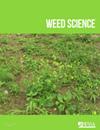杂草如何命名:委员会对 WSSA 综合名称列表的审查
IF 2.1
2区 农林科学
Q2 AGRONOMY
引用次数: 0
摘要
植物名称包含大量信息,却无需提供冗长的描述。对于科学家和利益相关者来说,这是一种高效的植物交流速记法,但前提是名称必须基于共识。通常认为每种植物只有两个名称,即俗名和学名,但这两个名称都可能造成混淆。通常有许多俗名指的是同一种植物,或者一个俗名指的是多个不同物种,还有一些植物根本没有俗名。学名是以国际标准为基础的;但是,当分类法不一致时,可能会使用两个学名来描述同一物种。杂草科学家和从业人员可以很容易地记住多个植物名称,并知道它们指的是同一个物种,但当我们考虑到全球交流和影响深远的数据库时,考虑这种转变的两面性就变得非常重要:1)对更高标准化的需求(由于数据库管理和因放弃交叉引用而丢失数据的风险)和 2)当地遗产的损失,这些遗产通过各种通用名称提供了有用的意义。此外,杂草科学家可能不愿意改变他们学会或经常使用的名称。在线数据库的发展和根据系统发育关系对植物分类学的重新分类改变了美国杂草学会(WSSA)编制的标准化植物名称列表的可访问性和作用。作为协调美国杂草学会和美国农业部杂草植物通用名称的努力的一部分,美国杂草学会标准化植物名称委员会最近完成了对《杂草通用名称综合清单》的广泛审查,并批准了对该清单中 2800 多个不同物种中约 10% 的名称进行小幅修改。本文章由计算机程序翻译,如有差异,请以英文原文为准。
How are weeds named: A committee review of the WSSA composite list of names
Plant names carry a significant amount of information without providing a lengthy description. This is an efficient shorthand for scientists and stakeholders to communicate about a plant, but only when the name is based on a common understanding. It is standard to think of each plant having just two names, a common name and a scientific name, yet both names can be a source of confusion. There are often many common names that refer to the same plant, or a single common name that refers to multiple different species, and some plants are without a common name at all. Scientific names are based upon international standards; however, when there is not agreement in the taxonomy, two scientific names may be used to describe the same species. Weed scientists and practitioners can easily memorize multiple plant names and know that they refer to the same species, but when we consider global communication and far-reaching databases, it becomes very relevant to consider two sides of this shift: 1) A need for greater standardization (due to database management and risk of lost data from dropped cross-referencing) and 2) the loss of local heritage which provides useful meaning through various common names. In addition, weed scientists can be resistant to changing names that they learned or frequently use. The developments in online databases and reclassification of plant taxonomy by phylogenetic relationships have changed the accessibility and role of the list of standardized plant names compiled by the Weed Science Society of America (WSSA). As part of an attempt to reconcile WSSA and USDA common names for weedy plants, the WSSA Standardized Plant Names Committee recently concluded an extensive review of the Composite List of Weeds common names and had small changes approved to about 10% of the list of over 2800 distinct species.
求助全文
通过发布文献求助,成功后即可免费获取论文全文。
去求助
来源期刊

Weed Science
农林科学-农艺学
CiteScore
4.60
自引率
12.00%
发文量
64
审稿时长
12-24 weeks
期刊介绍:
Weed Science publishes original research and scholarship in the form of peer-reviewed articles focused on fundamental research directly related to all aspects of weed science in agricultural systems. Topics for Weed Science include:
- the biology and ecology of weeds in agricultural, forestry, aquatic, turf, recreational, rights-of-way and other settings, genetics of weeds
- herbicide resistance, chemistry, biochemistry, physiology and molecular action of herbicides and plant growth regulators used to manage undesirable vegetation
- ecology of cropping and other agricultural systems as they relate to weed management
- biological and ecological aspects of weed control tools including biological agents, and herbicide resistant crops
- effect of weed management on soil, air and water.
 求助内容:
求助内容: 应助结果提醒方式:
应助结果提醒方式:


